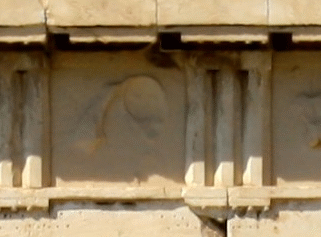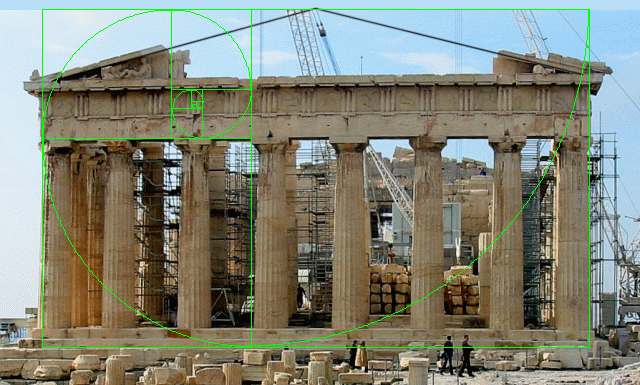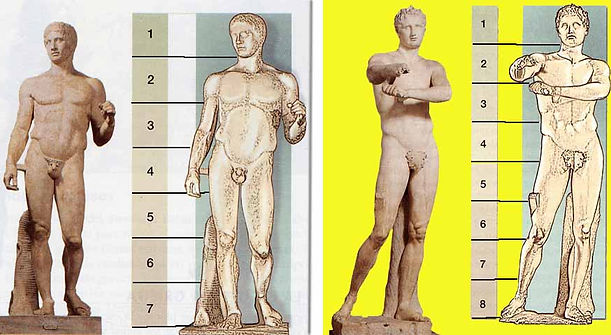6.
Egyptain temple style: *
tomb of queen Meresankh III (2558-2500 BC), at the Giza pyramid
complex.

7.
sarcophagi relief: *
Marble Sarcophagus with Scenes from the Lives of Saint Peter & Christ (Roman); early 300 AD.


8.
Romanesque construction & ornament: *
Durham Cathedral, Durham, England founded in AD 1093; regarded as one of the finest examples of Norman architecture
9.
Doric temples (mathematics in stone): *
Looking at the façade, the ratio between the height of the façade and the width conform closely to Golden Ratio proportions. The metopes & triglyphs describe 2 rectangles, whose width to height ratio between is exactly 1.618. The ratio between the height of the column & the height of the entablature is again the Golden ratio. The Golden ratio appears again between the height of the support beam and the decorative architrave. The width of the columns is in a golden ratio proportion formed by the distance from the center line of the columns to the outside of the columns.
below: metopes and triglyphs width to height of facade


10.
canon of the statue: *
This shows the 5th century BC canon of Polykleitos, versus the 4th century ideal of Lysippus

11.
pyramid temples, dimensions: *
The Great Pyramid of Giza, oldest & largest of the 3 pyramids in the Giza complex; is the oldest of the 7 Wonders of the Ancient World, the only one to remain intact. The tallest man-made structure in the world for over 3,800 years (until 160-meter tall Lincoln Cathedral spire finished c. 1300 AD). The accuracy of the pyramid's workmanship is very high, the 4 sides of the base have an average error of only 58 mm. in length; the base is horizontal & flat to within ±15 mm and the sides of the square base are closely aligned to the four cardinal compass points & the finished base was squared to a mean corner error of only 12 seconds of arc. The ratio of the perimeter to height equates to 2 Pi with an accuracy of better than 0.05% (corresponding to the well-known approximation of Pi= 22/7); this is the result of deliberate design proportion even though the Egyptians did not know Pi precisely; these relations of areas & circular ratio are so systematic that must have been in the builder's design.